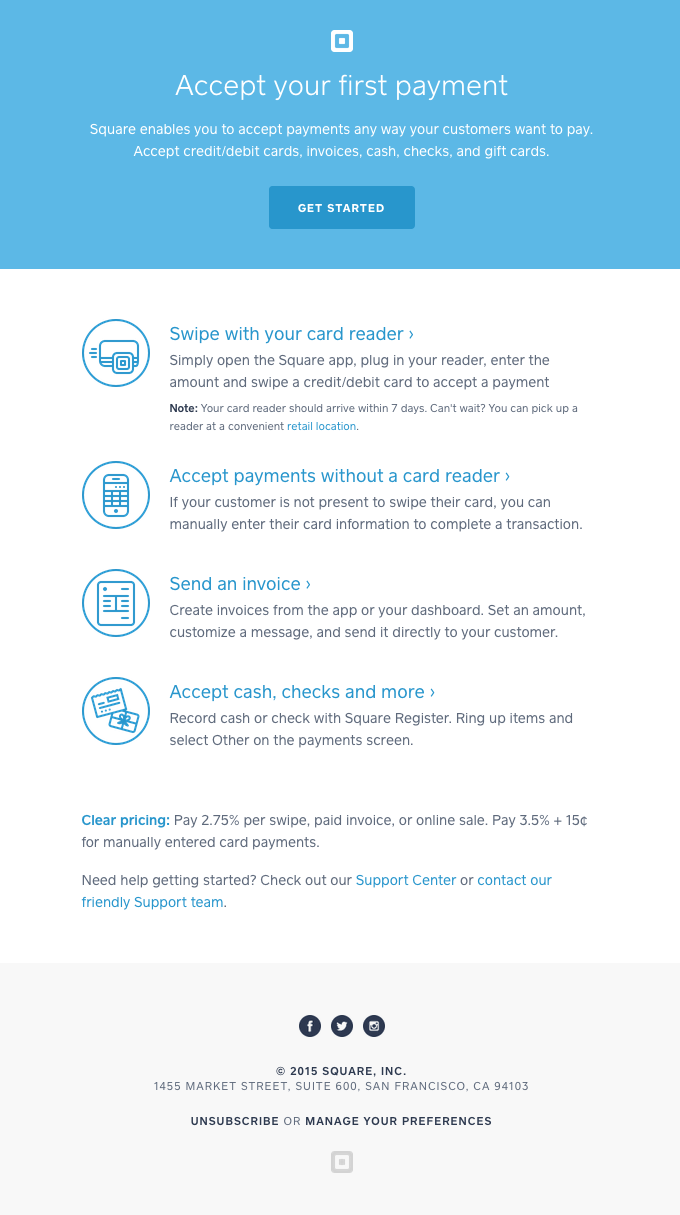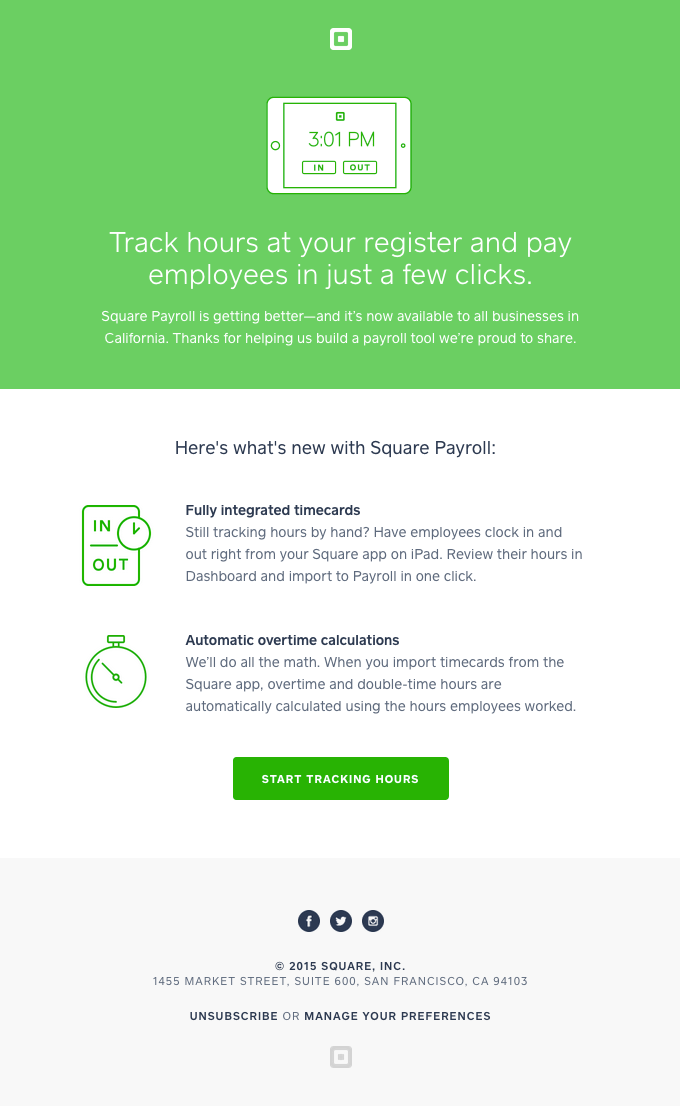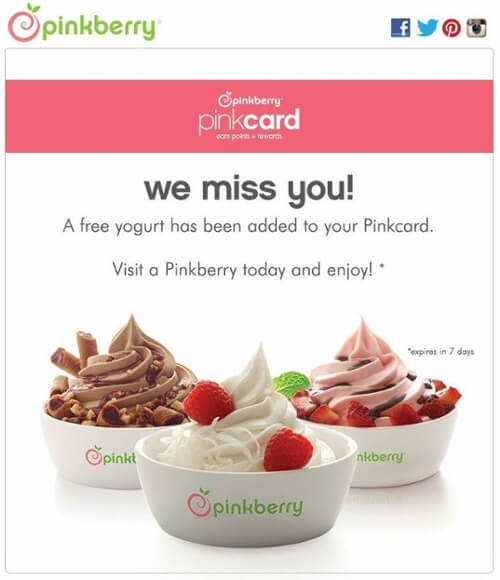Most companies spend the bulk of their marketing budget chasing after new leads. We get it, there’s something exciting about expanding into new customer segments, markets, or even different regions.
That said, it costs a lot more to convert a new customer than to market to an existing one. Focusing on retention is nothing new — brands like Amazon have been focused on this for years.
To cut through the noise and build real connections with customers, B2C brands need to develop a focused marketing strategy that addresses the customer experience as a holistic journey, rather than focusing on individual touchpoints.
What is Consumer Marketing?
Consumer marketing is a strategy centered around driving retention, loyalty, growth, and participation among existing customers.
What’s important to understand about this strategy is, it’s a bit different than the methods that you’d typically use to attract and convert new customers.
The term can be applied to any campaign designed for your existing audience—whether the goal is driving retention, loyalty, advocacy, or building a more engaged user community.
The key thing all of these strategies have in common, however, is, they all target an audience who has already converted.
While you might think about the marketing funnel in terms of the stages outlined on the left, consumer marketing is about what happens post-purchase.
Using Data from Multiple Sources to Create Customer-Centric Experiences
Marketers need to develop a big-picture view of the customer by gathering first-party data that enables them to connect with their audience more effectively.
First-party data is collected directly from the customer and owned by the company, as opposed to a third-party platform like Facebook or Google, and includes the following:
- Customer interviews
- Focus group feedback
- Digital interactions
- Purchase history
- Behavior
- Preferences
- Surveys
- Communications records
- Chatbot interactions
Because the goal is to create highly-relevant experiences that drive long-term loyalty, first-party data ensures that you’re building your strategy, content, and ads on the right foundation.
Focus on Retention, Then New User Growth
- User Retention: Getting consumer marketing right depends on developing a psychological understanding of what drives customers to buy but also what makes them stick with a brand for the long-haul.
- New User Growth: In consumer growth marketing, you’ll want to do more than keep customers around. Where things really start to take off is when you’ve mastered the art of turning happy customers into an army of brand-loyal marketers.
Essentially, you’ll need to develop an understanding of things like new customer acquisition, what makes a successful onboarding process, what makes someone leave a review, what rewards matter most in a loyalty program, or what compels someone to share user-generated content (UGC).
The Post-Purchase Funnel: Explained
While the funnel itself is relatively self-explanatory, some aren’t quite as familiar as what happens before the conversion.
Here, we’ve provided a brief overview of each stage and the types of campaigns you might use to deepen your relationship with your customers.
- Customer Adoption: According to McKinsey, customers build expectations following a purchase that informs their next decision-making journey (i.e., will customers continue the relationship or leave you for a competitor?)Campaign types include: a series of onboarding emails or videos, onboarding via in-app messages or push notifications, FAQs and customer support portals, personalized onboarding via screen share or guided training, walkthrough animations, and customer satisfaction surveys that offer insight into the buying process.
- Customer Retention: During the retention stage, the aim is lasting success and satisfaction. Here, you’ll want to consider how you can improve the usefulness of your products/services and continue to nurture the relationship through personalized offers, great service, and new product/feature releases.Make sure you develop the right communication cadence so that your brand stays top of mind, even though users aren’t actively participating in the buying process. Additionally, brands must continuously collect and implement feedback to ensure users receive the best possible experience.
- Customer Expansion: After building up trust, continuing to deliver quality services and experiences, you might then shift your focus on expansion–in other words, how can you increase customer lifetime value?Strategies here include upsell and cross-sell campaigns, renewals, upgrades, and driving repeat purchases.
- Customer Advocacy: The final stage in the funnel is advocacy. At this point, you’ve developed strong relationships with your customers–they trust you, they like your products/services, and they’ll likely stick around.Here, campaigns are focused on getting these customers to drive brand awareness–strategies include user-generated content (UGC) campaigns, community building (think online groups, workshops and classes, a network of service partners, etc.), and generate positive word-of-mouth (reviews, testimonials, case studies).
Multi-Touch Attribution & Reporting
Consumer marketing caters to a non-linear journey where buyers might enter the buying process from any channel or campaign, making it difficult to track progress through the sales funnel, and later, the post-purchase funnel.
Multi-touch attribution is a process that addresses this issue by reviewing the strategies used at each touchpoint, then determining which campaigns/messaging.
Both marketing and sales use this data to gain a big-picture understanding of the buyer’s journey, specifically which touchpoints delivered the best outcomes.
Examples of Consumer Marketing Strategies
Here are some examples from real brands using consumer marketing tactics to deliver top-notch experiences to their audiences.
Customer Onboarding Example
Here’s a sequence of three onboarding emails that Square offers to new users.
1. The first guides users toward their first quick “win,” accepting their first payment.

2. Next, Square builds on that basic knowledge from the last email and offers multiple tips at a time. Where this may have been overwhelming to the brand new user, this email assumes that the recipient knows their way around the dashboard, but still needs some guidance.

3. Then Square follows up with users to promote new features, continuing to drive value through quick explainers that encourage users to adopt the latest additions to the platform.

Customer Retention Strategies
The retention stage is all about driving a consistently high-quality experience. According to Marketo, the goal shifts toward providing value to consumers when they’re not actively engaged in the sales process.
At this stage, you might focus on driving more purchases by promoting add-ons or other products they might like, offer personalized product recommendations, provide content related to their interests, and so on.
Customer Loyalty Programs
You might try a points-based approach like North Face. The brand introduces the offer with a 10% welcome discount.
Loyalty programs aren’t always entirely focused on points and prizes. Charitable giving efforts like Toms’ ongoing support of communities in need go a long way in building lasting connections with customers that share the same values.
It’s also worth noting that, in light of the coronavirus outbreak, the shoe brand switched things up to address the immediate issue, and is now donating a third of its profits to supporting the efforts of its giving partners working the frontlines of the health crisis.
When you develop your loyalty program, it’s key to consider the smaller data points that make up your audience’s identities. The North Face program offers personalized product and content recommendations and a straightforward system for managing points. The user is in control of the experience.
Toms, on the other hand, doesn’t offer a rewards program but highlights the fact that each purchase goes toward helping others. While not personalized, per se, many customers want to align themselves with brands that give back.
Promoting Advocacy
77% of customers say they would recommend a company to a friend if they had a great experience. Alternatively, people are more than happy to spread the word about a bad experience, too.
Reviews and ratings offer a candid opinion of your organization, through the customer’s lens, while testimonials and case studies build trust by allowing your customers to do the talking (at your request).
UGC takes a less direct approach and aims to promote products on social channels by getting customers to post content tagging your brand/product/campaign hashtag.
According to the Journal of Consumer Marketing, UGC’s vicarious experience, transparency, and sense of community significantly deliver the best results for the brand.
Here’s Outdoor Voices’ #doingthings campaign, which features customers wearing the brand’s clothes in a whole range of contexts–be it yoga or laying around on the couch.
For clothing brands, UGC can add a ton of value to customers, as it helps them get a better sense of how something might fit their body type or what the color looks like in natural light.
Customer Reactivation
Consider new campaigns to reassure clients on how your solutions can help them. Have you recently activated a new feature that may be especially relevant now? Consider where you might add value–what might entice someone to come back.
Maybe your brand’s main solution is offering a sweet treat, like Pinkberry. In which case, a simple “we miss you” with a free treat thrown in is a simple, effective way to get someone back in the store.

Technology Helps Brands Understand Customer Motivation
While we can’t say that managing an omnichannel consumer marketing strategy with multiple attribution models is easy, today’s tech has risen to the challenge.
Marketers can collect first-party data from chatbots, conversational marketing pages, marketing automation tools, CRMs, sales enablement platforms, and more by using integrated solutions that provide full visibility into what drives consumer loyalty.
Identify Website Visitors to Unlock New Revenue
Stop wasting time pushing and pulling data from your audience targeting tools. Drift Audiences brings your data together, so you can send the right message to the right people.